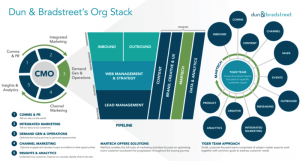By now, marketers should consider cart abandonment campaigns to be Marketing 101 – not just in terms of their role in saving a sale and driving repeat purchases, but because they’re critical to identifying and removing points of friction elsewhere in the buying journey. It’s common knowledge that 3 in 4 abandoned carts are recoverable – ConversionXL reports that 75% of customers who leave merchandise in a cart plan on coming back for it later. If a brand isn’t investing in at least the minimum in cart abandonment, they’re leaving revenue on the table.
As part of our research on the marketing strategies of today’s top brands, we created an account with a high-end clothing retailer that – despite being globally recognized with 600+ locations worldwide and more than $ 5 billion in annual revenue – isn’t doing cart abandonment. After abandoning a pair of mittens in a mobile shopping cart, I waited eagerly for a corresponding campaign and was surprised that there wasn’t any follow-up email prompting me to finish my purchase.
It’s worth playing Devil’s Advocate for a moment – as brands determine their “personality,” they might worry about whether or not cart abandonment fits with the impression they want to send potential customers. This retailer seems to strive towards a degree of elegance, and perhaps they don’t think it’s necessary to send a potentially tacky email begging customers to complete their purchase. Purely based on the vast majority of cart abandonment messages we see – which often tend to be fairly in-your-face and as pushy as possible – this is a valid concern, and begs the question: Is cart abandonment right for your brand?
Short answer: Yes. Using this rationale as a reason to not do cart abandonment still means you’re walking away from countless potential purchases and opportunities to encourage repeat engagement. Additionally, over the course of our research we’ve seen that it’s possible to do cart abandonment in a very classy and non-aggressive way. Consider:
A “friendly reminder” message
Not all of your messages need to be of the “You Forgot Something! Hurry And Buy It Before It’s Destroyed Forever!” variety — one of the brands we created an account with, an e-commerce company specializing in home design/aesthetic, sent us a message with the subject line “We’re Holding Your Items (Don’t Worry! We’ve Got You!)”. By doing exactly the opposite of what most cart abandonment campaigns do and encouraging us to take our time, this brand was able to demonstrate the truest form of customer-centricity – they were friendly instead of pushy, and it still got the job done.
Delivering product recommendations with cart abandonment
One of the brands we looked at, a retailer that sells casual workwear for men and women, was the only brand to offer recommendations for future/alternative purchases after we’d abandoned an item. By doing so, they acknowledged that what we’d abandoned might not be exactly what we were looking for, and used what they’d learned about us during our browsing sessions to suggest alternatives. It was one of the first cart abandonment campaigns I’d seen that was actionable in a way beyond simply “come finish your purchase,” and spoke to my needs as a customer.
Offering a discount as incentive to complete the purchase
A women’s clothing retailer we created an account with offered us free shipping in exchange for completing our purchase, and an electronics brand reminded us of a 10% off coupon that we had yet to use and could potentially apply to our abandoned merchandise. Offering some kind of incentive to customers within your cart abandonment campaign is a win-win: it’s a great way to demonstrate customer-centricity while making a concerted effort to impact longterm customer lifetime revenue.
The point of cart abandonment isn’t simply to push customers to finish their purchase. It’s a huge part of being customer-centric by making a concerted effort to figure out what stopped the purchase. Not sending a cart abandonment campaign will, in a best case scenario, lead your customers to forget about you entirely – and in a worst case scenario, it’ll leave a bad impression that’ll prevent them from coming back even if they remembered to.
(This post originally appeared on the Zaius blog.)
Digital & Social Articles on Business 2 Community(45)
Report Post





